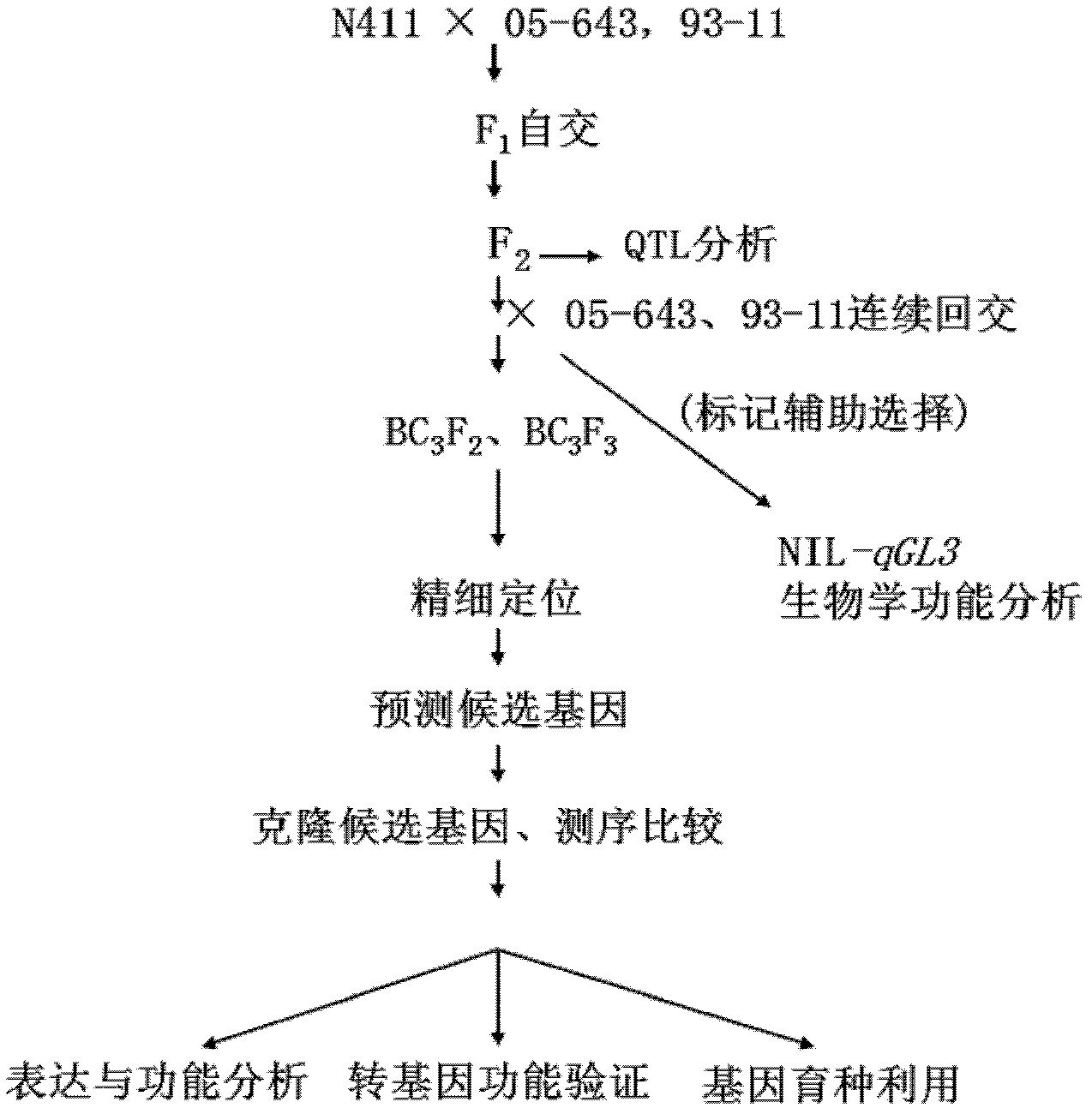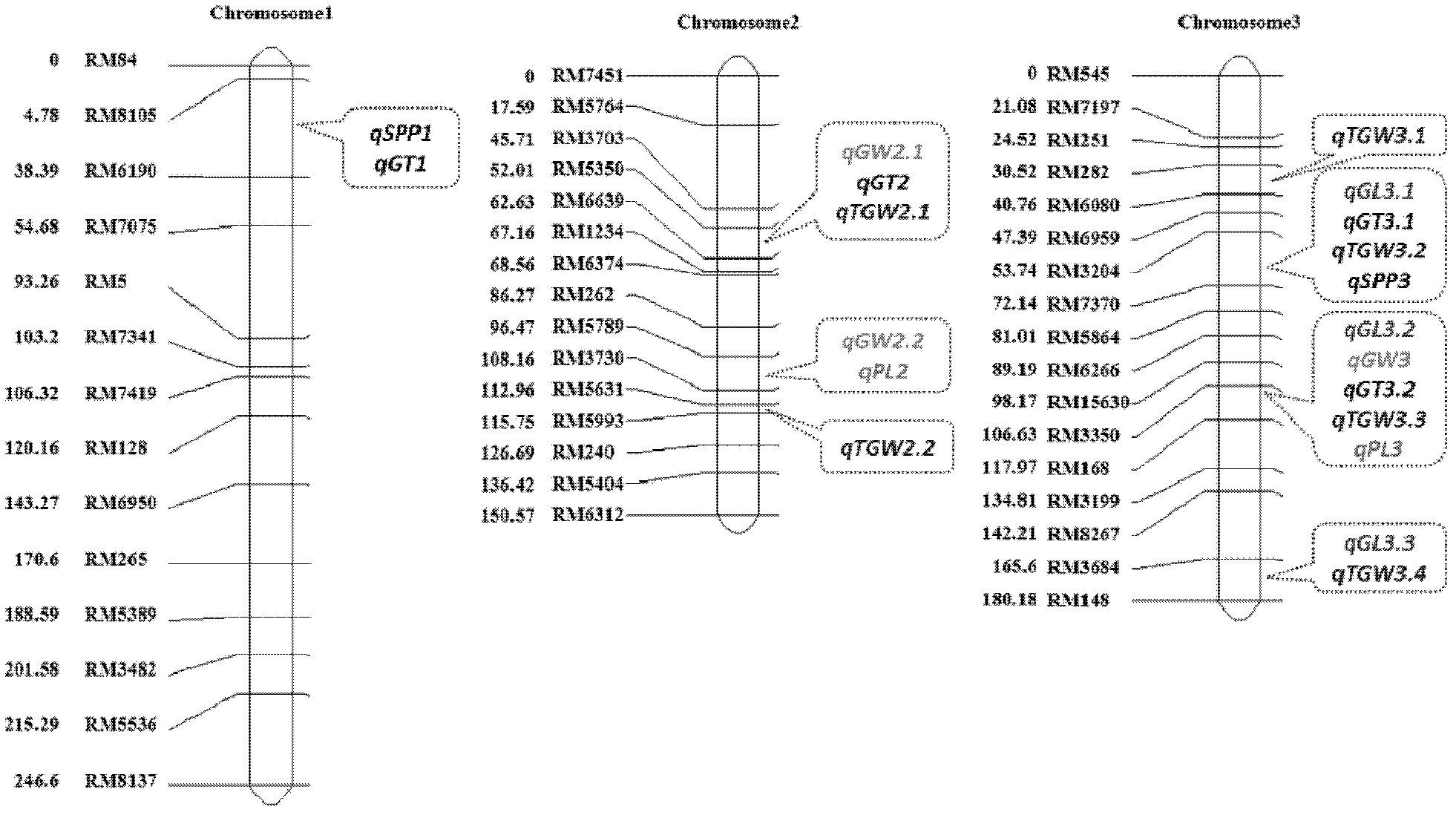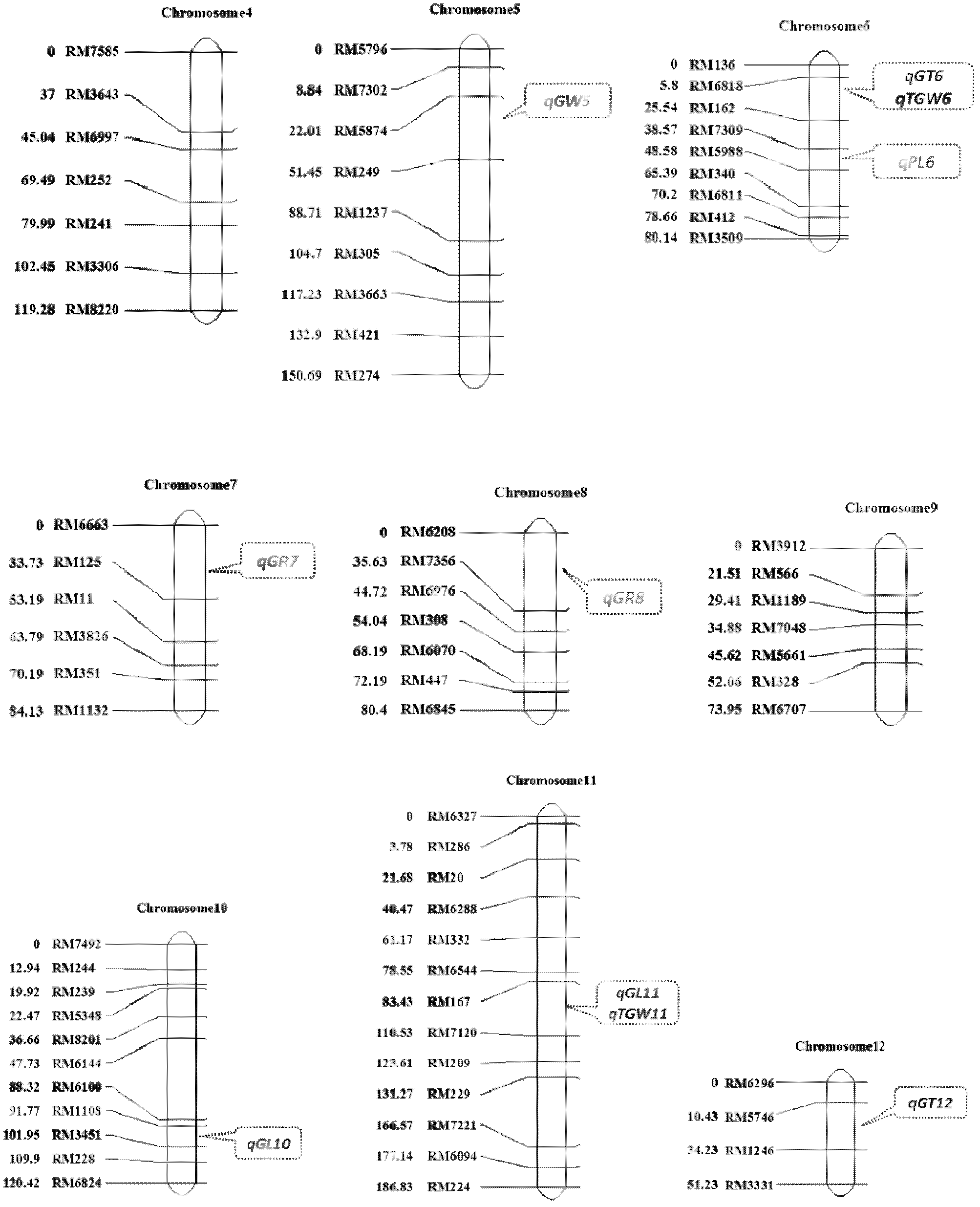Clone and application of semi-dominant gene qGL3 capable of controlling grain length and grain weight of rice kernel
A rice grain and gene technology, applied in application, genetic engineering, plant genetic improvement and other directions, can solve the problem of not obtaining clone function verification and other problems
- Summary
- Abstract
- Description
- Claims
- Application Information
AI Technical Summary
Problems solved by technology
Method used
Image
Examples
Embodiment 1
[0049] Example 1 Isolation and acquisition of rice grain length gene qGL3
[0050] (1) Materials and methods:
[0051] 1. The construction of large-grained germplasm N411 and 05-643, 93-11 hybrid population (for specific procedures, see figure 1 ):
[0052] (1) Using rice large-grain germplasm N411 (preserved by the rice germplasm bank of Nanjing Agricultural University, whose dominant allele can be obtained from Nannongxian 5, variety application acceptance number 20110730.0) as a donor material for favorable genes, Crossed with 05-643 (bred by crossing rice varieties Yuefeng B and Longtepu B) and 93-11, planted hybrids, and obtained F by selfing 1 . Will F 1 The seeds obtained by selfing are planted into a single plant to form F 2 Population, used to map grain length, grain weight QTL.
[0053] (2)F 2 Select a single plant with longer grains in the population to continuously backcross to 05-643 or 93-11, and backcross to high-generation BCF 2 Populations were used t...
Embodiment 2
[0073] Example 2 Expression analysis of qGL3 and its homologous gene family
[0074] According to the analysis of the rice EST profiles database on NCBI, it was found that the three members of the rice qGL3 family were expressed in various tissues, especially in young tissues with vigorous division. In order to better understand the expression pattern of this gene family, we designed the specific expression primer pair qGL3Seq-F (SEQ ID NO: 14), qGL3Seq-R (SEQ ID NO: 15); qGL3-L1Seq-F (SEQ ID NO: 16), qGL3-L1Seq-R (SEQ ID NO: 17) and qGL3-L2Seq-F (SEQ ID NO: 18), qGL3-L2Seq-R (SEQ ID NO: 19). The expression of this gene family was analyzed by semi-quantitative analysis.
[0075] The roots (R), stems (C), fresh leaves (LB), leaf sheaths (LB), 2cm-3cm primary panicles (PP), 8cm-10cm young panicles were extracted from 93-11 and 93-11NIL-qGL3 respectively (YP), the RNA of the mature ear (MP) just about to be extracted (using the RNA extraction kit of Tianwei Company), and rever...
Embodiment 3
[0079] Example 3 Subcellular localization of qGL3 wild-type protein and dominant allelic protein qGL3-D
[0080] Using the primer pair qGL3GFP-F (SEQ ID NO: 32) and qGL3GFP-R (SEQ ID NO: 33), the qGL3 (see specific example 1) and its allelic variant gene qGL3-D cloned on the T vector were respectively The full-length coding region was amplified, connected to the pMD-18Tsimple vector (purchased from Takara) by T-A cloning, transformed Escherichia coli DH5a competent cells by heat shock method, coated with ampicillin-resistant LB plates, and single clones were picked by PCR For positive detection (using the primer pair qGL3Seq-F / qGL3Seq-R), the positive single clone was sent to the biological company for sequencing, and the strain with the correct sequence was shaken to extract the plasmid with the target fragment. The obtained plasmid was digested with Smal I and connected to the vector plasmid pBI121 which was also digested to form recombinant plasmids pBI121-qGL3 and pBI121-q...
PUM
 Login to View More
Login to View More Abstract
Description
Claims
Application Information
 Login to View More
Login to View More - R&D
- Intellectual Property
- Life Sciences
- Materials
- Tech Scout
- Unparalleled Data Quality
- Higher Quality Content
- 60% Fewer Hallucinations
Browse by: Latest US Patents, China's latest patents, Technical Efficacy Thesaurus, Application Domain, Technology Topic, Popular Technical Reports.
© 2025 PatSnap. All rights reserved.Legal|Privacy policy|Modern Slavery Act Transparency Statement|Sitemap|About US| Contact US: help@patsnap.com



